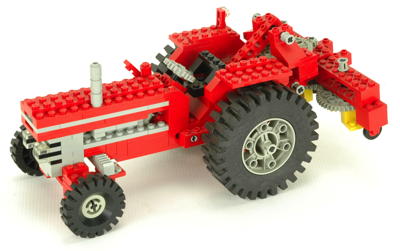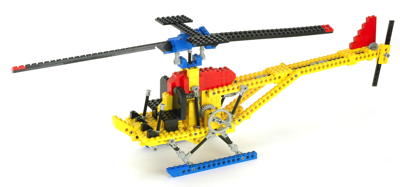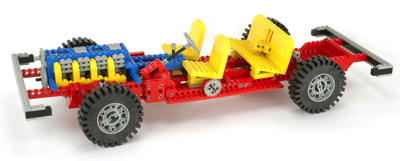All
the Technic parts were new in 1977! The basic set of
parts is
shown to the right. This comprises all of the new
parts which
were included in the sets, but does not include the motor or
battery
box which were available as an accessory pack.
Beams
&
Plates
The "standard" Technic parts, which have now become
ubiquitous, are the plate and the beam. Beams are just
like 1x
bricks, but have perpendicular holes at points midway
between the
studs. Technic plates are just like regular 2x plates,
but have
parallel holes at points midway between the studs.
These holes
are sized to accept either pins or axles. Beams
originally came
only in even lengths: 2, 4, 8, and 16. Plates came
only in 2x4
and 2x8. Many more sizes would later be
available. Studded
beams are still in use though they have mostly been replaced
by links.
Gears
Most technical functions were and still are accomplished
with
gears. In 1977, there were three sizes of spur gears
(gears which
transmit torque on parallel axes): 8 tooth, 24 tooth, and 40
tooth. The two larger gears also have axle holes and
stud holes
off the center which allow them to be used for other
purposes (such as
a crankshaft). There was also a 24 tooth crown gear
which could
be used as either a spur gear or a bevel gear (gears which
transmit
torque on perpendicular axes), and a rack gear. The 8
tooth gear
is still in use, but the others have been replaced with
improved
versions. The 40 tooth gear still exists but has been
used in
very few sets.
Axles
Axles are the basic unit of torque transmittal in
Technic. LEGO
chose to use a cruciform cross section. This has the
advantage of
never slipping, being easy to assemble, and centering well
in a
hole. Axles are the same size as a stud in diameter,
and
originally came in only even lengths: 2, 4, 6, 8, 10, and
12, and they
were always black. These are all still in use although
the 2 axle
has been modified and odd lengths are now available, as are
other
colors.
Connectors
and
Special
Parts
The bushing was used as either a spacer or a retainer and
fit onto an
axle. The pin was frictionless and was used to joint
two beams or
as a pivot. The connector fit onto the end of an
axle and
included a perpendicular hole which would accept a
pin. It could
also be used as a connecting rod for the piston. The
universal
joint connected two axles and allowed rotation around axes
angled apart
as much as 45 degrees. The pulley was used only
as a crank
in 1977, but would later also be used with belts.
These parts
could all be used in multiple applications, but only the
piston had a
single use. The 2x2 square piston was used for
engines, and had
to be used with a connector element. At this time,
these parts
were available only in light gray.
Wheels
and
Tires
LEGO® already had lots of wheels and tires, but they were not
big enough
for some of the new sets. A new 24x43 wheel was
introduced
with a dense foam tire. This tire was later available
in other
sizes, and would eventually be replaced by all rubber tires.
|
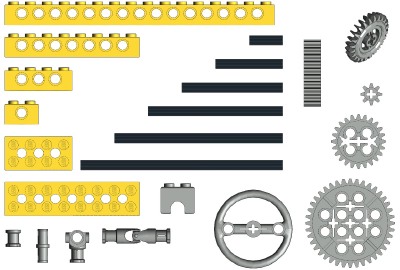
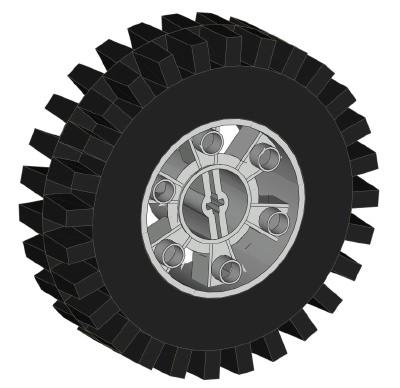
|



